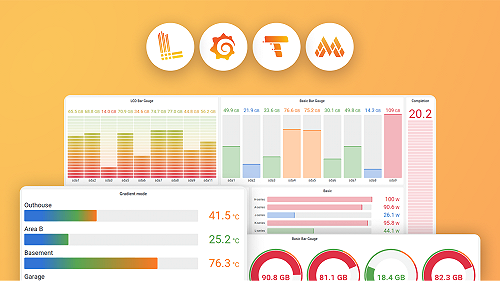Important: This documentation is about an older version. It's relevant only to the release noted, many of the features and functions have been updated or replaced. Please view the current version.
websockets
Caution
This is an experimental module.
While we intend to keep experimental modules as stable as possible, we may need to introduce breaking changes. This could happen at future k6 releases until the module becomes fully stable and graduates as a k6 core module. For more information, refer to the extension graduation process.
Experimental modules maintain a high level of stability and follow regular maintenance and security measures. Feel free to open an issue if you have any feedback or suggestions.
This experimental API implements the browser WebSocket API with additional k6-specific functionalities (cookies, tags, headers and so on).
The main difference between this module and
k6/ws is that this module uses a global event loop instead of a local one.
A global event loop lets a single VU have multiple concurrent connections, which improves performance.
The WebSocket API is not fully implemented, and we’re working on it, but we believe it’s usable for most users. So whether you’re writing a new WebSocket test, or currently using the k6/ws module, we invite you to give it a try, and report any issues in the project’s issue tracker. Our midterm goal is to make this module part of k6 core, and long-term to replace the
k6/ws module.
A WebSocket instance also has the following properties:
Websocket metrics
k6 takes specific measurements for Websockets. For the complete list, refer to the Metrics reference.
Example
This example shows:
- How a single VU can run multiple WebSockets connections asynchronously.
- How to use the timeout and interval functions to stop the connections after some period.
import { randomString, randomIntBetween } from 'https://jslib.k6.io/k6-utils/1.1.0/index.js';
import { WebSocket } from 'k6/experimental/websockets';
import { setTimeout, clearTimeout, setInterval, clearInterval } from 'k6/experimental/timers';
const chatRoomName = 'publicRoom'; // choose any chat room name
const sessionDuration = randomIntBetween(5000, 60000); // user session between 5s and 1m
export default function () {
for (let i = 0; i < 4; i++) {
startWSWorker(i);
}
}
function startWSWorker(id) {
// create a new websocket connection
const ws = new WebSocket(`wss://test-api.k6.io/ws/crocochat/${chatRoomName}/`);
ws.addEventListener('open', () => {
// change the user name
ws.send(JSON.stringify({ event: 'SET_NAME', new_name: `Croc ${__VU}:${id}` }));
// listen for messages/errors and log them into console
ws.addEventListener('message', (e) => {
const msg = JSON.parse(e.data);
if (msg.event === 'CHAT_MSG') {
console.log(`VU ${__VU}:${id} received: ${msg.user} says: ${msg.message}`);
} else if (msg.event === 'ERROR') {
console.error(`VU ${__VU}:${id} received:: ${msg.message}`);
} else {
console.log(`VU ${__VU}:${id} received unhandled message: ${msg.message}`);
}
});
// send a message every 2-8 seconds
const intervalId = setInterval(() => {
ws.send(JSON.stringify({ event: 'SAY', message: `I'm saying ${randomString(5)}` }));
}, randomIntBetween(2000, 8000)); // say something every 2-8 seconds
// after a sessionDuration stop sending messages and leave the room
const timeout1id = setTimeout(function () {
clearInterval(intervalId);
console.log(`VU ${__VU}:${id}: ${sessionDuration}ms passed, leaving the chat`);
ws.send(JSON.stringify({ event: 'LEAVE' }));
}, sessionDuration);
// after a sessionDuration + 3s close the connection
const timeout2id = setTimeout(function () {
console.log(`Closing the socket forcefully 3s after graceful LEAVE`);
ws.close();
}, sessionDuration + 3000);
// when connection is closing, clean up the previously created timers
ws.addEventListener('close', () => {
clearTimeout(timeout1id);
clearTimeout(timeout2id);
console.log(`VU ${__VU}:${id}: disconnected`);
});
});
}

